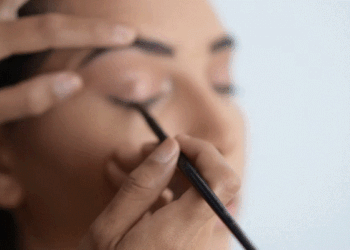Whether you are just starting out your runner’s journey, or you’ve been taking to the roads for most of your life, shopping for road running shoes can be overwhelming. With ever-evolving technology and design, new advancements in foams and materials, and a variety of brands and styles to choose from, many shoppers find the selection process tricky and anxiety-ridden.
However, the process doesn’t need to be overwhelming and if you avoid these 5 missteps when choosing your road running shoes, you’ll be ready to stride in no time.
What not to do when buying road running shoe
- Don’t forget to get your foot measured properly
One of the biggest mistakes a runner can make is simply walking into a shoe store and buying running shoes based solely on their regular shoe size. Running shoes require a more in-depth understanding of your foot, heel and arch and it’s important to measure the heel-to-toe length of your foot, foot width and arch length.
Arch length refers to the measurement from your heel to the ball of your foot – the area where your foot flexes. A running shoe is designed to flex at a particular spot, just as your foot is designed to flex at a particular spot, and it is important to try and match these points together.
- Don’t be afraid to increase your shoe size
Tight running shoes lead to bruised toenails, blisters and injury and this is why it’s important to get your foot measured every time you need new running shoes. When it comes to road running, many people will find that their regular shoe size is too snug for road running shoes – and don’t be scared to size up. Many runners will also notice that running shoes that once fit them may become a bit snug and this is because the muscles in your feet can stretch with road running – another reason foot strengthening exercises are important. Sometimes going up a size, or half a size, will make your running experience that much better. Essentially, always get your feet measured – every time you are buying running shoes.
- Don’t wear the shoes for too long
Many people like to wear their running shoes until they are worn out – this is because of the sense of familiarity a particular pair of shoes can bring to a runner. However, it is not practical or healthy to wear a pair of shoes until they are completely worn out. A good indicator of when it is time to replace your road-running footwear is when you start to notice more aches and pains. Another important indicator is when the foam inside your running shoes becomes lumpy – this can lead to uneven soles and cause greater damage to your feet.
If all else fails, remember that a decent pair of road running shoes should last between 33 to 500 miles.
- Don’t purchase road running shoes based on popularity
Fit, feel and function are the three most important elements when it comes to purchasing your road running shoes. Don’t base your purchase decision on what brands you think will make you look good, what your friends are wearing or what looks the best to you. Wearers usually select shoes based on a brand’s popularity and sometimes overlook comfort for style – which is a massive error. But one shoe doesn’t fit all and it’s important to find a shoe that works for your specific foot.
When trying on shoes, consider comfort, fit and function as opposed to what shoe will make you look stylish on the road. When it comes to road running – feel trumps looks.
- Don’t shop for running shoes in the morning
The best time of the day to shop for running shoes is later in the afternoon. Many people who purchase shoes early in the morning will notice that the shoe tends to feel tighter when they hit their run. This is because feet begin swelling in the morning and don’t stop until the afternoon. In fact, our feet only stop sweating and swelling at around 4pm. With this in mind, it’s important to try on and purchase your running shoes later in the day so as to avoid any surprises on your next run.
In Summary
When shopping for any shoe, from road running shoes to trail running shoes, it’s important that you do your research and find the best fit for your foot.







